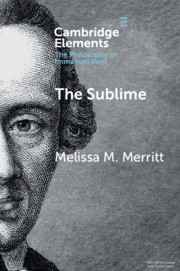Element contents
The Sublime
Published online by Cambridge University Press: 11 July 2018
Summary
Keywords
- Type
- Element
- Information
- Online ISBN: 9781108529709Publisher: Cambridge University PressPrint publication: 05 July 2018
References
Primary Sources
Secondary Sources
- 11
- Cited by



